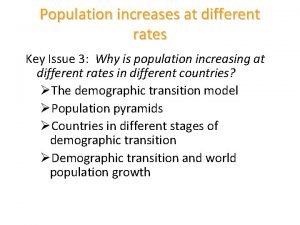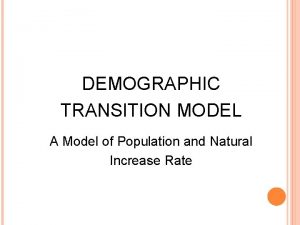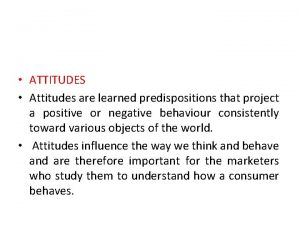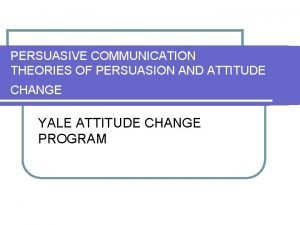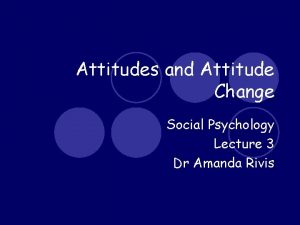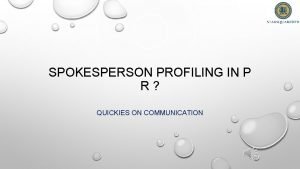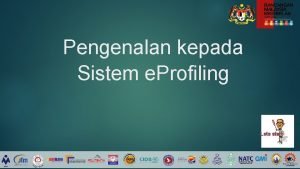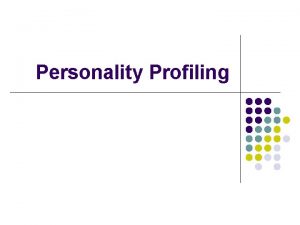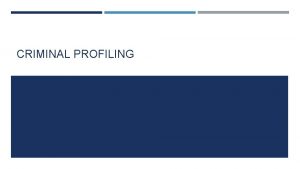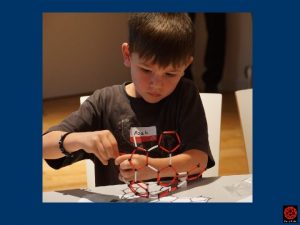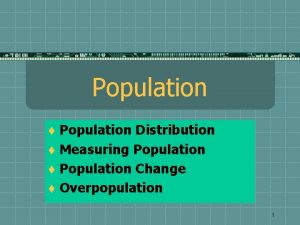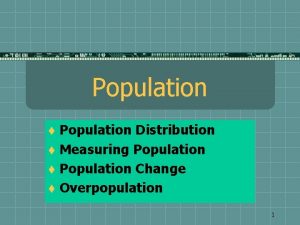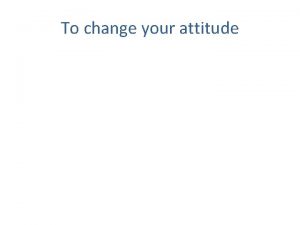Profiling Population and Measuring Attitude Change among Children













- Slides: 13

Profiling Population and Measuring Attitude Change among Children and Young People Lead: Professor Daniel Boduszek Team: Nicole Sherretts & Dominic Willmott

Outline • Aims (Study 1, Study 2) • Sampling • Survey methods • Proposed analyses

Aim One • To create a psychosocial profile of the Caribbean population using a systematic sample of children and young people from Barbados and Grenada. • ADD IMAGE OF LATENT PROFILE ANALYSIS

Population (Sampling) The study sample will be stratified by: Total minimum sample required for this project • Country • Barbados • Grenada • School level • • Primary Secondary College/University Youth offenders • Gender • Barbados = 744 • Grenada = 735

Survey methods – constructs to be measured • Empathy, Emotional Intelligence, Hopelessness • Violent Behaviour and Attitudes • Behavioural Intentions and Non-violent Conflict Resolution

Survey methods – Content Validity and Cognitive Testing & Pilot Test of the Survey • The proposed survey was submitted to Barbados and Grenada research teams for comments. • Then, administered to respondents representing the likely target population in Barbados only. • This step had two purposes: • First, it revealed minor amendments with the survey via respondent feedback or observation. • Second, it produced data for the next step of the survey construction— evaluation of the item pool’s psychometric properties and quality.

Survey methods – Psychometric Analysis • The proposed concepts within the survey will be subject to construct validity and dimensionality testing using traditional factor analytic techniques along with innovative bi-factorial modelling and MTMM analysis. • Further analysis will aim to investigate the discriminant and predictive validity of the proposed scales. Additionally, the composite reliability of the scales will be assessed.

Aim Two • To test the effectiveness of serious gaming for attitude/behaviour change among children and young people • Mixed within (pre/postgame exposure) and between (control/experimental group)

Study procedure • Students in the experimental group will be exposed to a serious gaming intervention which facilitates attitude/behaviour change and builds empathy capacity and non-adversarial conflict resolution skills. • Students in the control group will not be exposed to any intervention except what is already included in the school curriculum. • The same survey will be administered to both experimental and control groups in order to observe the change in attitudes/behaviours after being exposed to the gaming intervention (or not). This part will evaluate the effectiveness of the gaming intervention.

Survey methods – Data Entry, Data Management and Data Analysis • Collected data will be entered into SPSS 22 • Data merging, cleaning and analysis will be conducted • To investigate the effectiveness of gaming intervention, we will use a series of repeated measures ANOVAs, structural equation modelling with longitudinal data, latent profile analysis, and propensity score matching technique.

Proposed Data Analysis • Change in psychosocial profile (attitudes and behaviour) • Latent profile analysis 0. 9 0. 8 0. 7 Probability • Assessment before & and after game intervention) 1 0. 6 0. 5 0. 4 0. 3 0. 2 • Figure on right – example of my prison research 0. 1 0 Physical Emotional Neglect Abuse Items Sexual (touch) Sexual (intercourse)

Proposed Data Analysis • The effect of treatment (game) on attitudes/behaviour (DV) • Subjects in exposure group vs. non-exposure group may be very different in baseline characteristics (C 1 -4 and D 1 -3). • We will use propensity score (a single number) to match subjects in each group (experimental & control) based on observed covariates • Propensity score matching analysis

Thank you!!! Questions? Comments?
 Key issue 3 why does population growth vary among regions
Key issue 3 why does population growth vary among regions Why does population growth vary among regions
Why does population growth vary among regions You attitude examples
You attitude examples Attitude and value change
Attitude and value change Population ecology section 1 population dynamics answer key
Population ecology section 1 population dynamics answer key Section 1 population dynamics
Section 1 population dynamics Population ecology section 1 population dynamics
Population ecology section 1 population dynamics Population ecology section 1 population dynamics answer key
Population ecology section 1 population dynamics answer key What is persuasion theory
What is persuasion theory Characteristics of attitudes
Characteristics of attitudes Activity profiling
Activity profiling Limitation of a student
Limitation of a student Spokesperson profiling
Spokesperson profiling E profilling
E profilling
